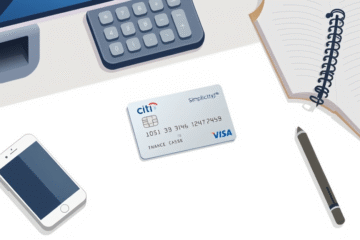Good Debt can be a powerful tool for building wealth when used strategically.
Understanding the distinction between beneficial and harmful debt is essential for achieving long-term financial success.
In today’s complex financial landscape, making informed decisions about when to take on debt can significantly impact your financial future.
This article explores the crucial differences between good and bad debt, helping you make smarter financial choices.
Understanding Good vs. Bad Debt
Understanding the fundamental difference between good debt and bad debt is essential for effective financial management.
Good debt refers to borrowing that aids in increasing your net worth or generating future income.
For instance, student loans or business investments are considered good debt because they often lead to increased earnings over time.
Bad debt, however, involves borrowing money for depreciating assets like credit card purchases or expensive cars.
Such debts usually have high interest rates and do not contribute to your financial growth.
Understanding these differences helps in making informed financial decisions.
For a more detailed understanding, visit this page on Fidelity.
Here’s a brief overview:
- Good debt: Increases net worth, generates income, typically has lower interest rates.
- Bad debt: Involves high interest, no financial growth, depreciates in value.
Characteristics of Good Debt
- A good debt should have the potential to enhance your financial situation over the long term. This may include investments that grow in value
- Good debts often have lower interest rates compared to bad debts, making them manageable and less costly over time. Examples include mortgages and student loans.
- They should improve your net worth or generate income, adding value as you make strategic financial choices. Learn more with Equifax.
- This type of debt enables achieving personal and financial goals, such as owning a home or financing education.
- Repayment terms should align with your financial capacity, allowing for manageable and consistent payments. You can read further details on Fidelity Investments.
- Good debt can offer tax advantages that benefit your financial plans. Strategically acquired, these debts serve as valuable tools.
Examples of Good Debt
| Type of Good Debt | Description |
|---|---|
| Student Loans | Used for education to increase earning potential and net worth. |
| Mortgages | Loans for acquiring homes, appreciating in value over time and build equity. |
| Business Loans | Borrowed for starting or expanding a business that potentially increases income. |
Taking on student loans is considered good debt when it increases your earning potential and enhances your net worth.
While mortgage debt assists in purchasing a home, appreciating in value and building equity ultimately increase your wealth.
Moreover, business loans are advantageous for starting or growing a business they potentially expand income and financial stability.
Identifying Bad Debt
Identifying bad debt involves recognizing certain signs that differentiate it from good debt. Bad debt typically occurs when funds are borrowed for items that do not appreciate in value or generate income. Examples include financing luxury goods or vacations on credit cards without a clear repayment plan.
In contrast, good debt is linked to investments that improve financial stability, such as education or real estate. Pay attention to warning signs indicating bad debt:
- High interest rates that accumulate quickly.
- Purchases made on credit without repayment plans.
- Assets purchased that continuously lose value.
To further understand how bad debt manifests, see methods for estimating and handling bad debts via NetSuite’s guide on bad debt. Recognizing these criteria helps individuals build a financially healthy portfolio and avoid detrimental practices. Furthermore, managing debt efficiently involves ensuring that each borrowed amount is purposeful and brings financial growth.
Impact of Bad Debt on Financial Health
Bad debt can severely impact your financial health by limiting your ability to meet financial obligations and damaging credit scores. This damage influences borrowing capabilities and creates a vicious cycle of financial instability.
High levels of unpaid debt can drain your available cash flow, which reduces your ability to invest in valuable opportunities like education or business ventures.
In extreme cases, overwhelming bad debt can lead to severe financial repercussions such as bankruptcy, compromising long-term financial goals and personal stability.
Retail purchases on high-interest credit cards can quickly lead to substantial bad debt, making it crucial to manage spending wisely and consistently pay off balances as agreed.
To mitigate bad debt effects, individuals need a structured debt repayment plan and proactive financial management strategies to maintain healthier overall financial well-being.
No matter the financial status, understanding the implications of bad debt and taking preventive measures can drastically improve financial health in the long term.
Making Informed Financial Decisions
Managing both good and bad debt effectively requires strategic decision-making skills, allowing individuals to secure financial stability.
Analyzing financial data and understanding net worth is crucial when differentiating between debt types, ensuring informed choices. Understanding Financial Education for Better Financial Decisions
Consulting financial advisors can offer insights into selecting suitable investments, whether in education or business ventures. Financial Decision Making: Analysis, Steps, & Examples
Budgeting is an essential tool that helps in evaluating income against expenses, reducing potential bad debt incurrence.
Budgeting Techniques for Debt Management
Improving financial literacy equips individuals with necessary skills for debt management; thus, attending workshops is beneficial.Key Financial Literacy Workshops
- Set financial goals to focus on and guide your decisions.
- Regularly review your financial plan to adapt and overcome challenges.
Effective communication with creditors can negotiate terms, benefiting overall financial health significantly.
By understanding the distinction between good and bad debt, you can make better financial decisions that align with your long-term goals.
Remember that the key lies in using debt as a strategic tool rather than a quick fix for immediate wants.



0 Comments